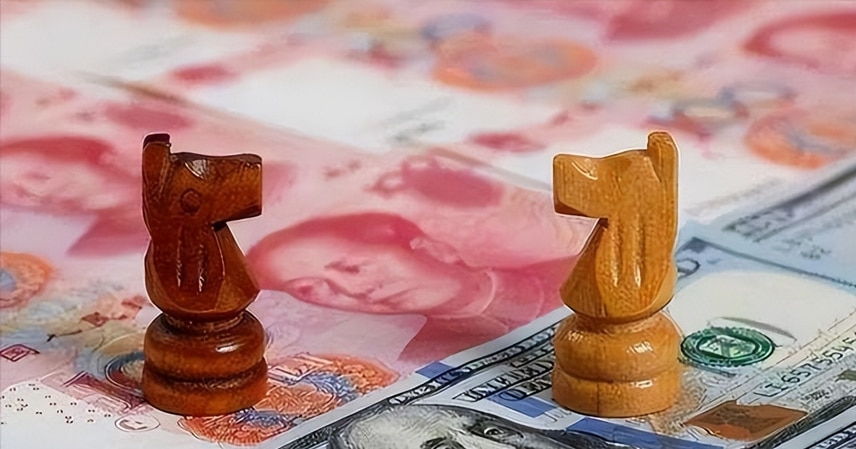For years, China’s rapid economic rise has been a source of global fascination and pride. Many believed that surpassing the United States in total GDP was only a matter of time. Back in 2021, China’s GDP had reached 77% of America’s, sparking confidence that the world’s second-largest economy was closing in fast on the U.S.
However, in the latest data from the first half of this year, that figure fell to just 62% — a surprising reversal that has fueled intense discussion across the internet. What happened? Has China’s economy slowed, or is there more behind these numbers than meets the eye?
A Broader Perspective: Progress Despite the Setback
China’s economic trajectory has been one of unprecedented growth. Decades ago, its GDP was less than a tenth of America’s. The drive to catch up fueled extraordinary development — lifting hundreds of millions out of poverty, transforming infrastructure, and turning China into the world’s manufacturing powerhouse.
However, while China was sprinting forward, the U.S. never stood still. After the Cold War, America consolidated its global dominance, absorbing vast industries and technologies left behind by the collapsed Soviet Union. This infusion of industrial and technological capital accelerated U.S. growth dramatically, widening the economic gap in ways few anticipated.
By the early 2000s, China had climbed to sixth place globally, and soon after overtook Japan and the U.K. to become the world’s second-largest economy. The 77% ratio achieved in 2021 seemed like a milestone — but it has since slipped significantly.
The Hidden Factor: Exchange Rates
At first glance, the decline seems puzzling. Official data show that China’s real GDP grew by 5.4%, far outpacing America’s 1.9%. Logically, that should narrow the gap — not widen it.
The main reason lies in currency exchange rates. GDP comparisons between countries are expressed in U.S. dollars, meaning China’s figures are affected by the strength of the yuan against the dollar.
Over the past year, the U.S. Federal Reserve’s aggressive interest rate hikes — aimed at controlling inflation — have made the dollar stronger. As global investors sought safety and returns in dollar assets, currencies worldwide weakened in comparison.
When converted into U.S. dollars, China’s nominal GDP appeared smaller, even though its actual output and growth in yuan terms continued to rise.
To illustrate: if someone’s net worth was ¥7 million last year, with an exchange rate of 7:1, that equaled $1 million. This year, if their wealth rose to ¥7.2 million but the exchange rate shifted to 7.2:1, their dollar value remains the same — growth erased by exchange rate movements.
Inflation and Measurement Differences
Another critical factor is inflation. In the U.S., inflation has remained persistently high — with core PCE price growth at about 2.5–3% in 2024. Rising prices artificially inflate GDP, since goods and services are measured at current market prices.
For example, if a loaf of bread cost $1 last year and $1.20 this year, that 20% price increase contributes to GDP growth, even if actual production hasn’t changed.
By contrast, China has experienced mild deflation in some sectors. Prices for goods have fallen slightly, which is beneficial for consumers but reduces nominal GDP. When one economy inflates and the other deflates, the gap in dollar-denominated GDP widens further, even if real production trends tell a different story.
How the U.S. Measures GDP
There’s also a structural difference in how GDP is calculated.
The U.S. primarily uses the expenditure approach, which includes both actual and “imputed” spending — such as rent homeowners would theoretically pay if they rented their own homes. These “imputed rents” artificially raise GDP figures even though no money changes hands.
Additionally, America’s sky-high healthcare and legal costs inflate its GDP. A simple medical visit that might cost under $10 in China could cost thousands of dollars in the U.S. The same applies to legal services, where lawsuits can easily reach tens of thousands. While this boosts U.S. GDP, it doesn’t necessarily reflect higher living standards or real output.
China, on the other hand, uses the production approach, focusing on actual value added in manufacturing and production — a method that tends to produce more conservative and realistic results.
The Bigger Picture
While the U.S. economy currently appears larger on paper, it’s important to recognize that much of its GDP expansion is nominal, driven by inflation, debt, and accounting methods. The United States now faces record-high national debt, while household financial stress remains significant.
China’s economy, by contrast, is built on tangible production — manufacturing, exports, and infrastructure. Although currency shifts and deflation temporarily reduce its global ranking in dollar terms, its underlying growth remains stable.
Ultimately, the goal for China isn’t to chase a headline GDP number but to ensure people live better lives and that the economy continues developing sustainably. True strength comes from innovation, productivity, and quality of life — not just exchange rates or inflation-fueled statistics.
In time, the numbers will speak for themselves.
References
- National Bureau of Statistics of China
- U.S. Bureau of Economic Analysis
- IMF World Economic Outlook (2024)



